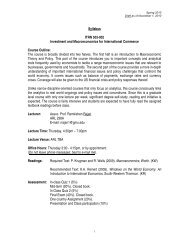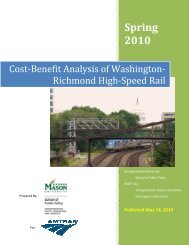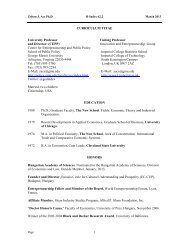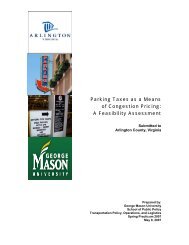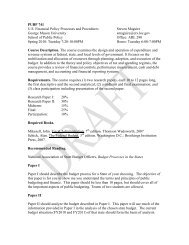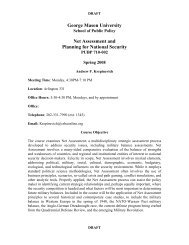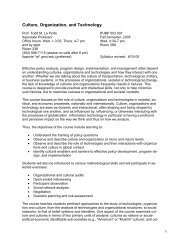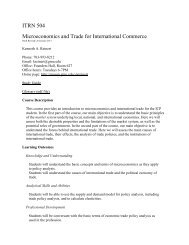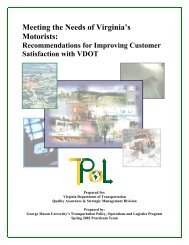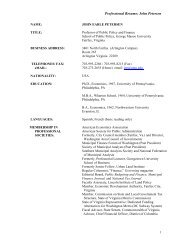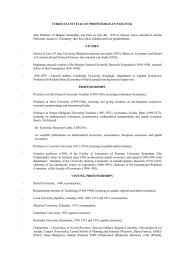Coordinating critical transportation infrastructure vulnerability
Coordinating critical transportation infrastructure vulnerability
Coordinating critical transportation infrastructure vulnerability
Create successful ePaper yourself
Turn your PDF publications into a flip-book with our unique Google optimized e-Paper software.
5.0 HYBRID SELF ASSESSMENT TOOL<br />
This section will define the assessment tool that has been developed for <strong>critical</strong> <strong>infrastructure</strong><br />
assessments in the National Capital Region, as well as what factors guided in its development.<br />
5.1 HYBRID TOOL GUIDING PRINCIPLES<br />
The Hybrid Tool was developed in the context of the principles of the FEMA disaster life-cycle<br />
process. These four stages are defined in Section 1.2.1. As stated in Section 3.0, fifteen tools were<br />
examined for applicability to the National Capital Region and it was decided that none of the tools<br />
adequately addressed the needs according to the Homeland Security Act of 2002. Therefore a<br />
Hybrid Tool was formulated that is robust, comprehensive, and adequate to be applied to a regional<br />
assessment of <strong>transportation</strong> <strong>infrastructure</strong> <strong>vulnerability</strong> to meet the requirements of the Homeland<br />
Security Act of 2002 for the National Capital Region.<br />
For optimum effectiveness, the tool has been designed as a checklist for the transit agency<br />
management to do a self-assessment. From this self-assessment, an organization can determine its<br />
needs based on the shortcomings identified while conducting the self assessment. For example, the<br />
way an organization answers the questions about its reliance on commercially-provided<br />
communications or power will tell a lot about the need for redundant support. The way an<br />
organization answers the questions in the “Asset Hardening” section will tell a lot about the need to<br />
increase perimeter security. Knowing the answers to the Hybrid Tool questions will provide insight<br />
into an organization’s needs. Section 6 presents methodologies with which to prioritize these needs.<br />
The questions used to fashion the Hybrid Tool were formulated from:<br />
1. Ohio Department of Transportation: Guide to Conducting Critical Asset Protection Self-<br />
Assessments;<br />
2. Emergency Preparedness for Transit Terrorism (TCRP Synthesis 27);<br />
3. Navy Model (Self-Assessment Questionnaire for Infrastructure Independence + Inorganic<br />
Infrastructure Self-Assessment; and<br />
4. FTA Public Transportation System Security and Emergency Preparedness Planning Guide.<br />
It is necessary to mention each category and its relevance to the assessment.<br />
5.2 PLANNING AND PREVENTION<br />
Proper preparation can facilitate coordinated action for improving response and recovery. Elements<br />
of planning include communication, response training, resource assessment, multi-agency regional<br />
exercises and table-top activities, and distribution of information to the media, schools, business’<br />
and individuals on what to do in the event of a disaster.<br />
PUBP 710/722 Page 23 of 60<br />
WMATA Case Study June 5, 2003



